Designing a Drone Registration and Authorisation Service
Civil Aviation Authority
Project Overview
Role
Senior Product Design Consultant
Timeline
10 months
Team
Service Designer, User Researcher, Content Designer, Business Change Consultant, Policy Makers and Inspectors, Development team.
I led the product design of a digital service enabling individuals and businesses in the UK to register their drone operations and apply for operational authorisation under the SORA (Specific Operations Risk Assessment) framework. This work aimed to translate evolving aviation policy into an intuitive, end-to-end user journey that met both applicant and regulatory needs.
The Civil Aviation Authority (CAA) was introducing a UK-specific implementation of SORA, a complex regulatory framework for assessing the safety and risk of drone operations.
We needed to:
- Design a seamless, compliant digital application journey for drone operators.
- Ensure accurate, complete data collection for regulators and assessors.
- Translate in-progress, often ambiguous policy into user-friendly digital touchpoints.
- Balance applicant experience with the needs of inspectors, policy teams and business stakeholders.
+
Set up an accessible design system based on GDS standards.
Designing the Journey
The users
Applicants
Individuals or organisations applying to register and authorise drone operations.
Assessors
CAA inspectors reviewing applications for regulatory compliance.
Assessment 1: Determine SAIL (Specific Assurance and Integrity Level) and containment level.
Assessment 2: Submit compliance approach and evidence for authorisation.
Access to submitted applications, structured data and supporting evidence for review.
SAIL Calculator
A key feature of the service was the SAIL calculator, which guided users through determining the risk level of their operations. This informed their application pathway, requirements, and documentation needs.
We held months of workshops and interactive sessions with policy experts to interpret requirements.
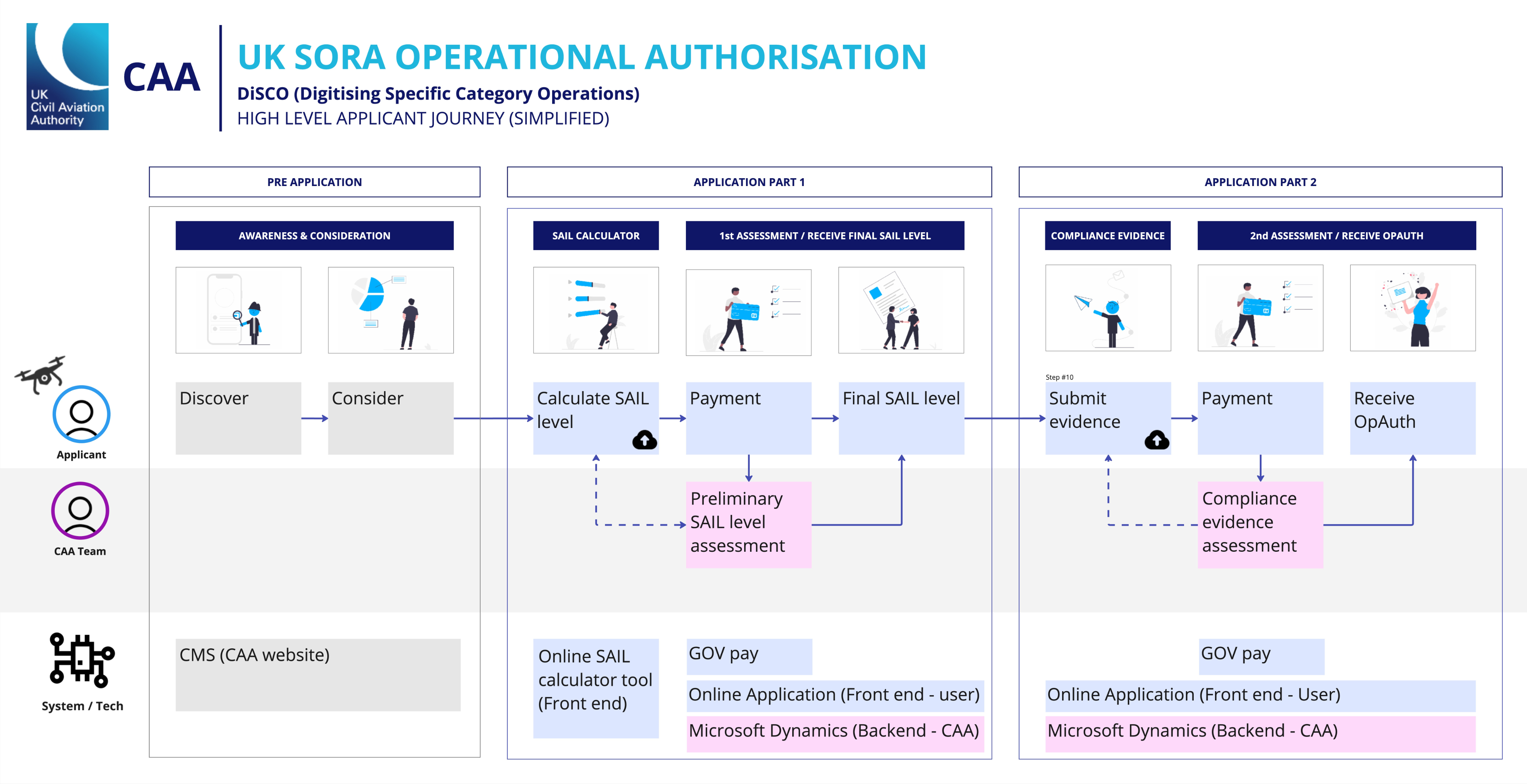
Designed logic-based form flows to collect accurate input without overwhelming the user.
Created prototypes to validate understanding and iteratively simplify inputs.

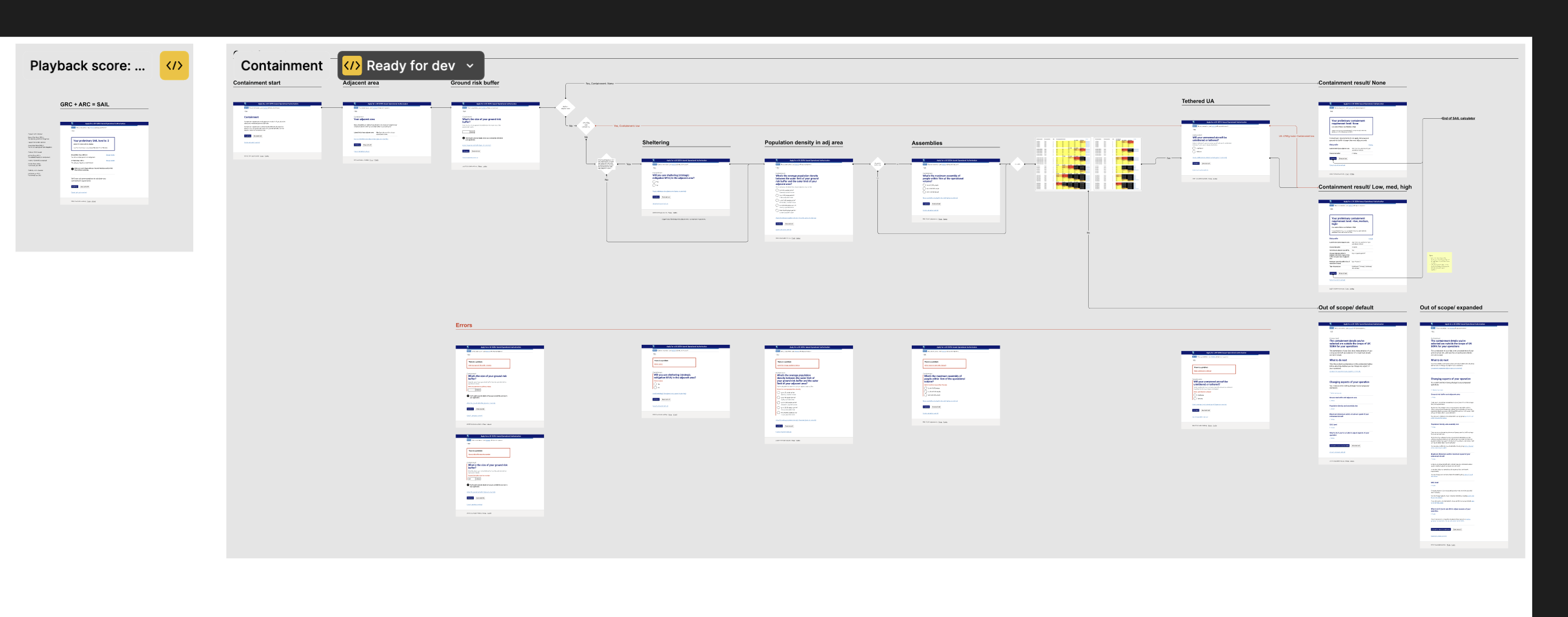
Translating Policy into UX
Much of the work involved decoding dense policy documents and restructuring them into clear, guided digital experiences.
Example: Operational Safety Objectives (OSOs)
OSOs are complex technical requirements. We worked closely with policy and data experts to:
- Define consistent structure for each OSO.
- Ensure data models supported conditional logic and validation.
- Prototype how users would interact with, understand, and respond to OSO requirements.
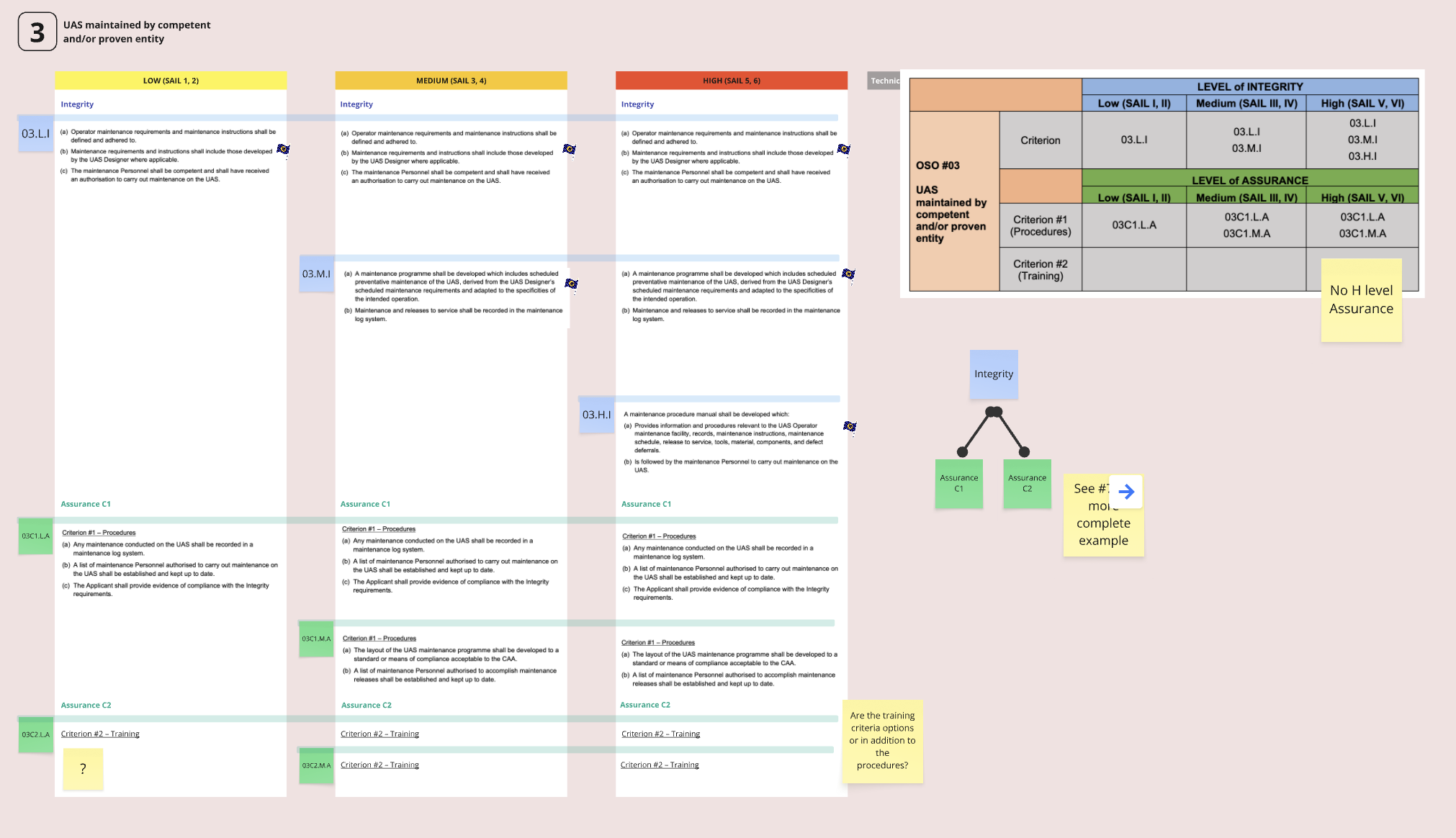
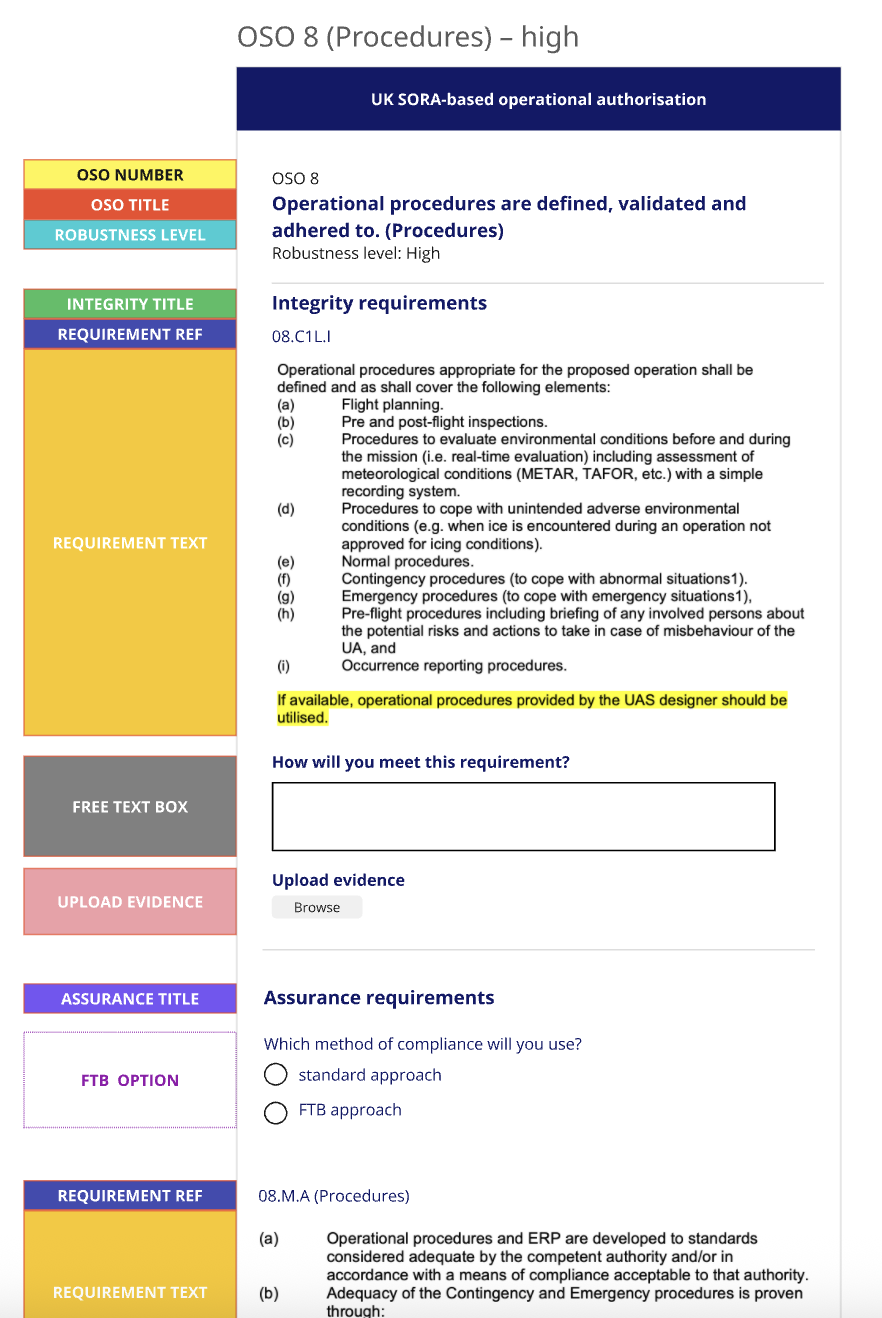
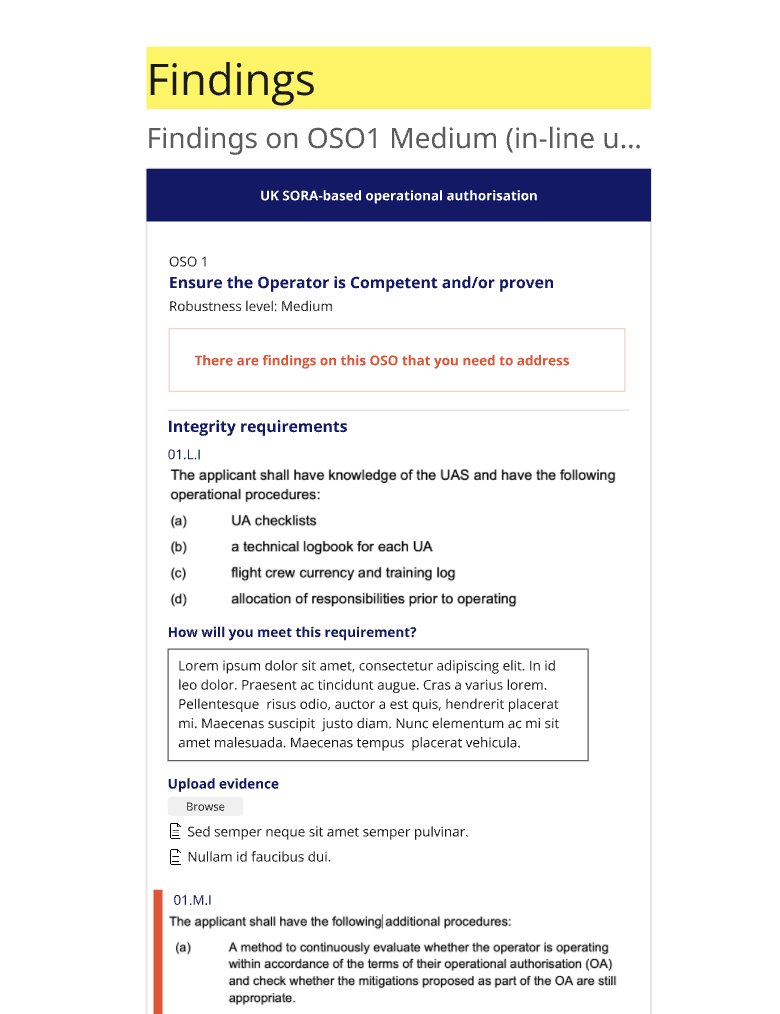
Design Approach
- Co-Design & Workshops: Embedded in policy, design, and regulatory teams to align on interpretation and experience.
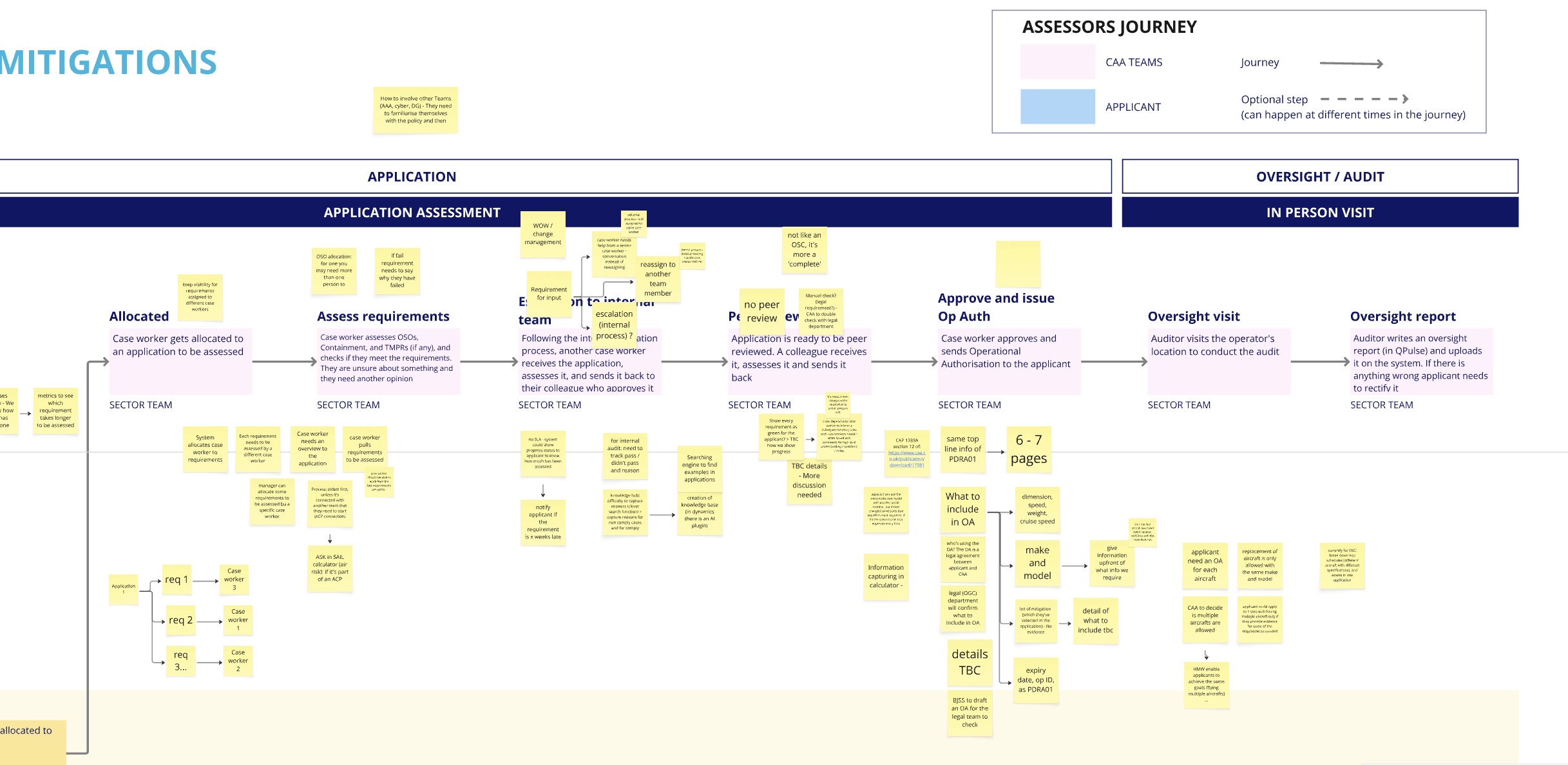
- Prototyping: Created prototypes early to test flows and content comprehension.
- Iterative Testing: Validated flows with real users from drone operator communities.
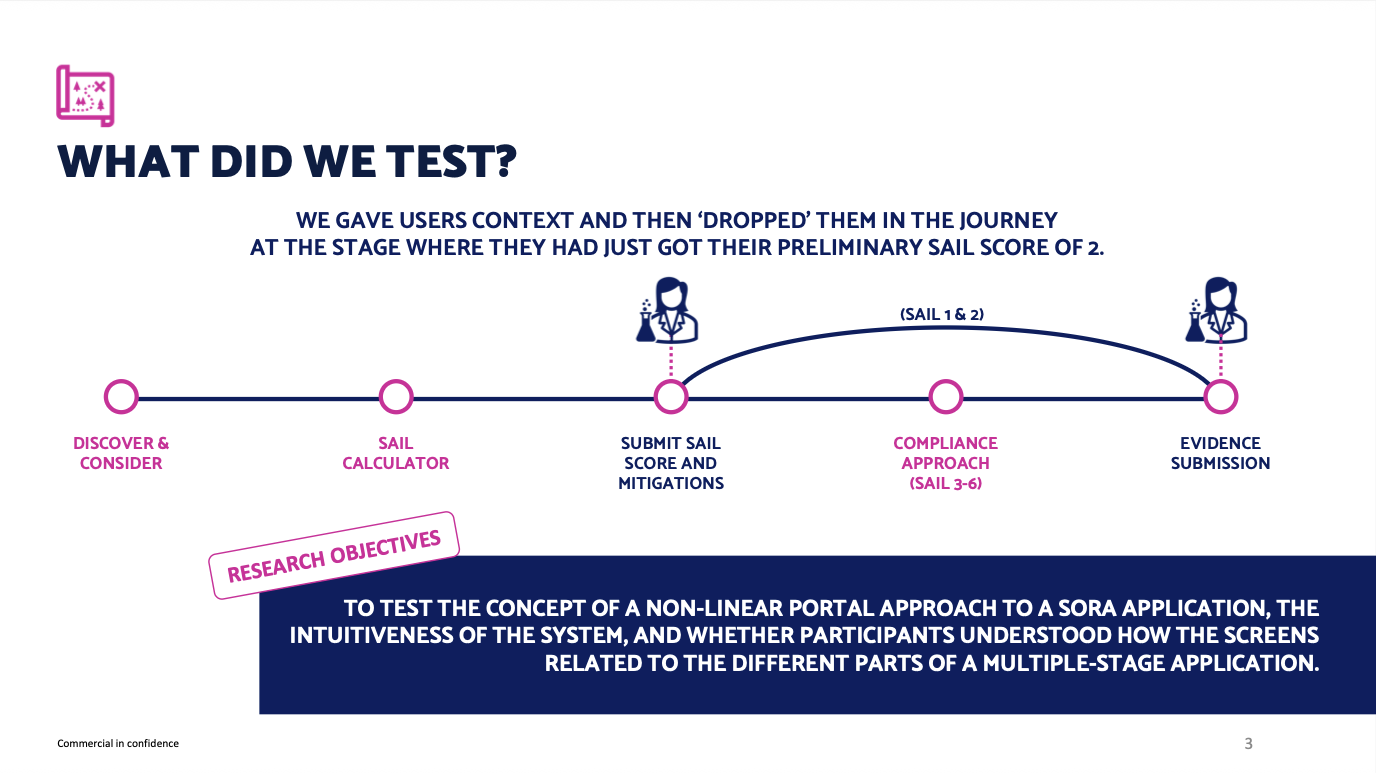
Key Challenges
Navigating and interpreting unfinished policy and evolving guidance.
Balancing regulatory precision with user clarity.
Designing for two divergent users: applicants who needed simplicity, and assessors who needed thorough, structured information.
Where We Landed
- A tested prototype of the full applicant journey.
- Structured assessment screens with clear task summaries.
- Content models and component structures ready for build.
Outcomes, Findings and Next Steps
- High engagement in prototype sessions, with clear evidence of improved policy comprehension.
- Internal alignment on complex regulatory structures.
- Build phase with development team.
- Ongoing policy translation as UK SORA guidance continues to evolve.
Sam Long – 2025